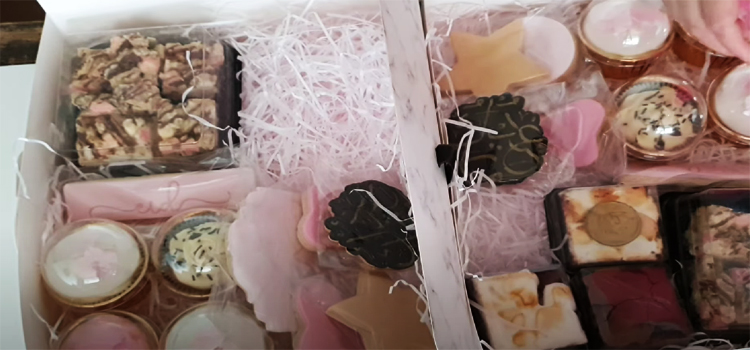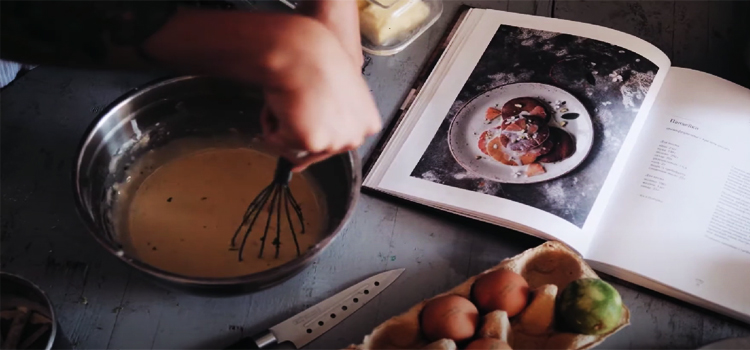Last Updated on July 21, 2024 by Lori Walker
Being a **baking lover** who has **sold** loads of **homemade goodies** at different **markets and events**, I’ve cracked the code on the **tricky business** of finding the **right prices** for your delicious treats.
Pricing your baked goods requires careful consideration of factors like ingredient costs, labor, and market demand.
We’ll explore some of my tips and tricks on how to price baked goods, so you can feel confident that you’re getting paid what your creations are worth.
So let’s dive in and discover the best strategies.
What Factors Should I Consider When Pricing My Baked Goods?

- Ingredient Costs: The cost of ingredients [1] is one of the most prominent factors when pricing your baked goods. Take the time to calculate the cost of each ingredient you use and factor in any waste or spoilage that may occur.
- Labor: Your time and effort should also be factored into the pricing of your baked goods. Consider how long it takes to prep ingredients, bake, and decorate your items, and assign a value to your time based on what you think is fair.
- Overhead Expenses: Overhead expenses, such as rent, utilities, and equipment costs, should also be considered when pricing your baked goods. These costs can vary depending on whether you’re running a home-based bakery or a storefront operation.
- Market Demand: Market demand is another essential factor to consider. Take the time to research the going rate for similar baked goods in your area, and adjust your prices accordingly to remain competitive.
- Profit Margin: When setting your prices, you’ll want to factor in your desired profit margin. This will vary depending on your goals and the size of your operation, but a good rule of thumb is to aim for a 30-50% profit margin on each item you sell.
Should I Charge By The Piece Or By Weight?
The answer to this question will depend on the baked goods you sell. For items like cupcakes, cookies, or individual pastries, charging by the piece may be more practical.
“Price is what you pay. Value is what you get.”
– Warren Buffett, Chairperson Of Berkshire Hathaway
This allows customers to purchase only the needed amount without buying a larger quantity. For more oversized items like cakes or bread, charging by weight may be more appropriate.
It ensures that customers pay for the actual amount of product they receive and help to streamline the ordering process. But how much should you charge for cake pops?
How Do I Factor In My Time & Labor?

Factoring in your time and labor is essential to pricing your baked goods. To do this, estimate how long it takes to prep ingredients, bake, and decorate your items.
Once you know the total time spent, assign a value to your time based on what you think is fair. Consider factors like your level of experience, the recipe’s complexity, and your product’s overall quality.
“Setting the right price for your baked goods is like finding the perfect balance of ingredients in a recipe – it takes time, effort, and a bit of trial and error. But with a little patience and determination, you can create pricing that reflects the value of your hard work and ensures that your customers keep coming back for more.”
– Leonelli Bakery
You can also research average hourly wages for bakers in your area to understand what others charge for their time.
Once you have a value assigned to your time, you can factor it in along with your ingredient and overhead costs to arrive at a fair and accurate price for your baked goods.
But aside from the direct labor you put into the business, such as the actual baking, assembling, and packaging, also consider the indirect labor involved. How Much Does It Cost, a trusted site for goods and services pricing, says you should also account for tasks such as planning, recipe development, ingredient sourcing, and administrative duties. While these tasks may not be directly tied to the production process, they contribute to the overall labor involved in running your baking business
You might also like to read about how profitable the cookie business is here.
What Should I Do If I’m Not Sure What To Charge?
If you need to figure out what to charge for your baked goods, there are several steps you can take to get a better idea of what the market will bear.
One option is to ask other local bakers about their pricing strategies. You can also consult online resources or pricing guides or ask your customers for feedback.
Another option is to experiment with different pricing strategies [1], such as offering discounts or promotions, and see how they affect your sales.
The key is balancing fair pricing and competitiveness to attract and retain customers while making a profit.
You can find a suitable pricing model for your business and customer base by being open to feedback and experimenting with different pricing strategies.
Also Read: How Much Do You Charge For Chocolate-Covered Strawberries?
FAQs
What is the formula for costing a cake?
The formula for costing a cake involves adding up the cost of ingredients, labor, overhead expenses, and desired profit margin to arrive at a final price.
What percentage should food cost be for baked goods?
Food costs should typically be around 20-30% for baked goods. Find out how much cookie cake costs here.
In Conclusion
Pricing your baked goods can be daunting, but with the right approach, it can be a rewarding and profitable venture.
By considering factors like ingredient costs, labor, overhead expenses, market demand, and profit margins, you can arrive at a fair and accurate price for your baked goods.
It’s essential to balance fair pricing and competitiveness to attract and retain customers while making a profit. Feel free to experiment with different pricing strategies or seek advice from other local bakers.
With patience, practice, and determination, you can find the perfect pricing strategy for your baked goods and enjoy success in your baking business.
References:
- https://www.allrecipes.com/recipes/17567/ingredients/
- https://www.uschamber.com/co/run/finance/pricing-strategies-for-your-business
- How to Store Krispy Kreme Donuts To Keep Them Fresh Longer - July 23, 2024
- How to Make Frosting with Granulated Sugar: A Simple Guide - July 22, 2024
- What Happens to Bakery Waste? - July 22, 2024
